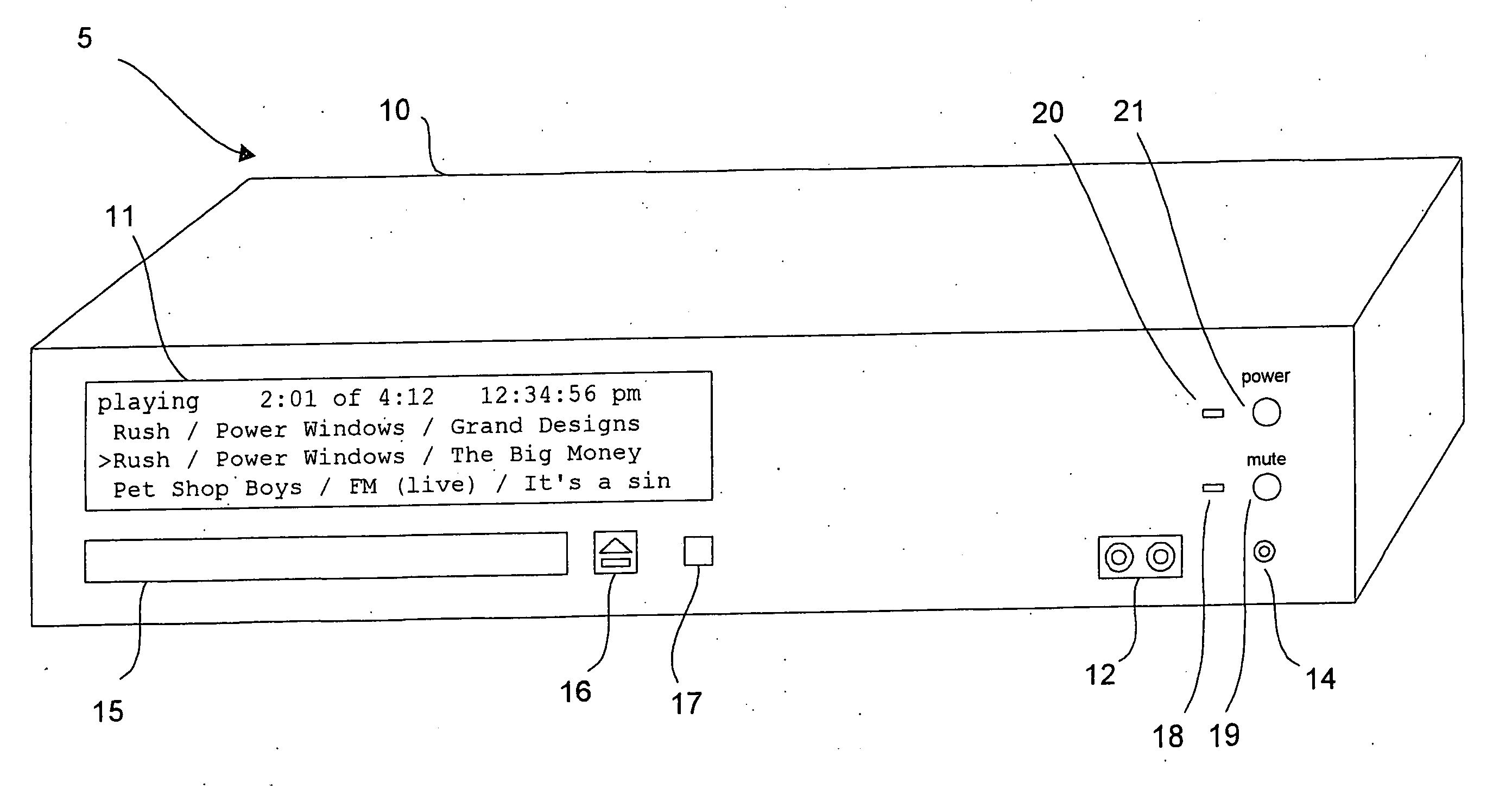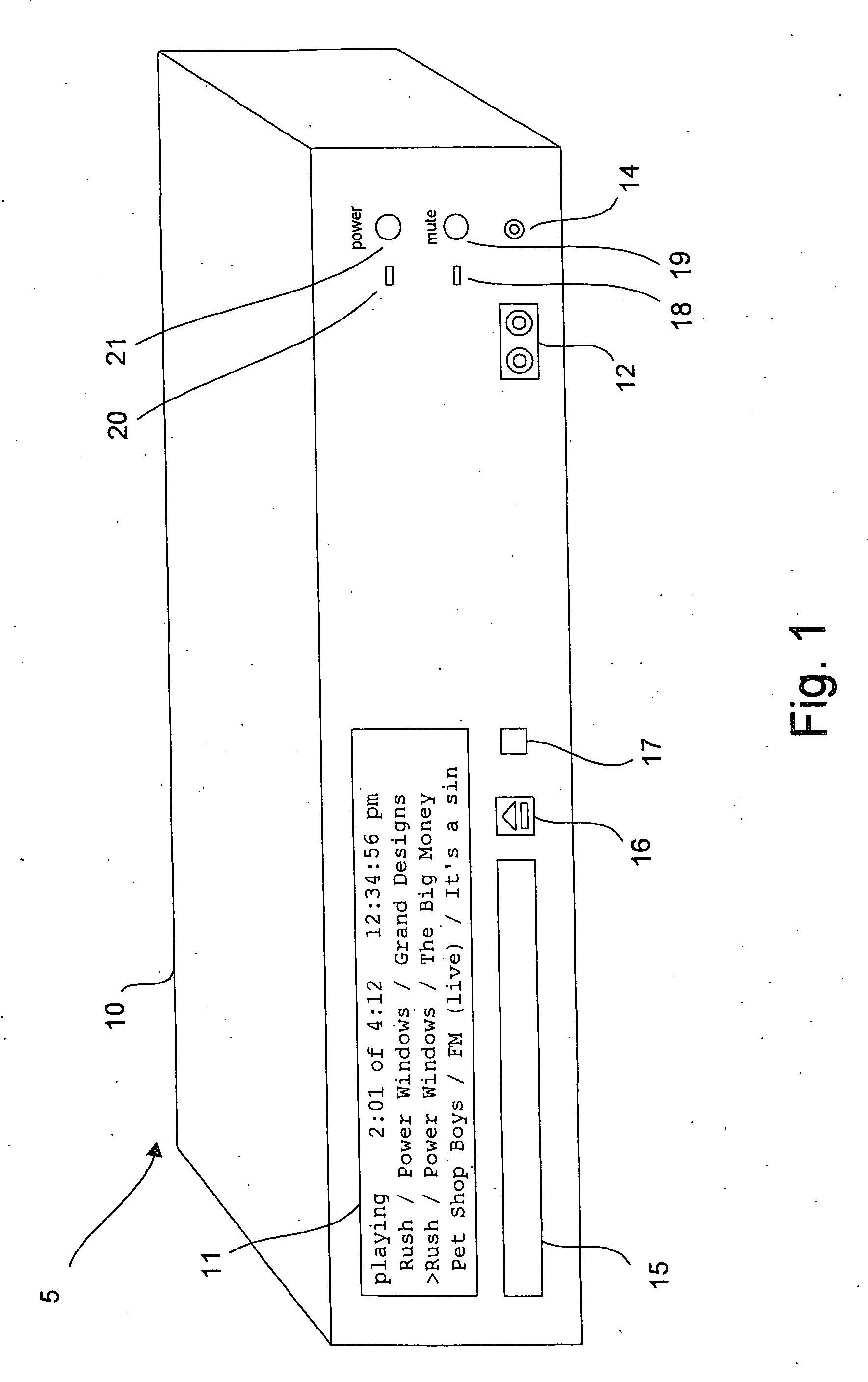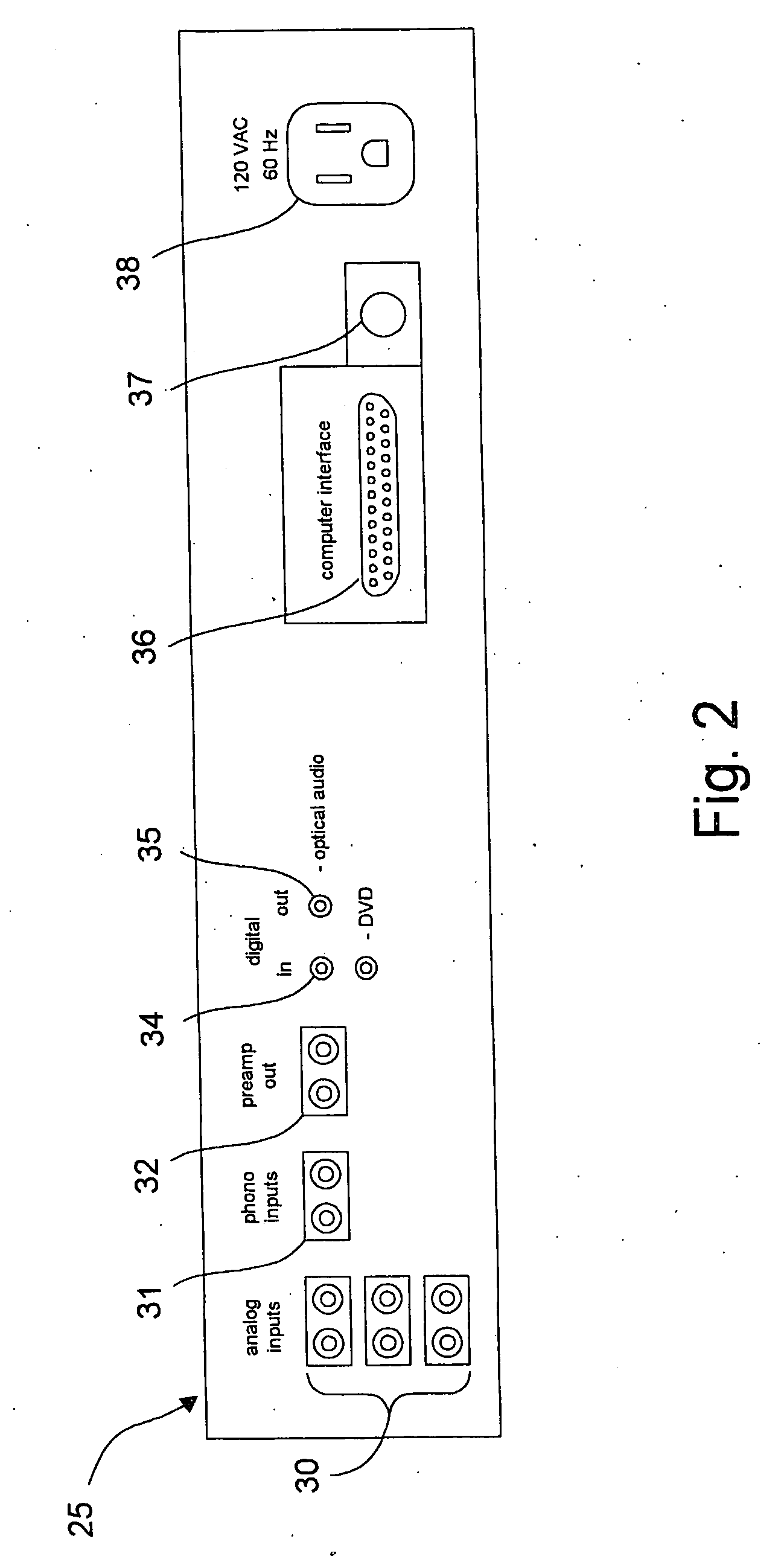Audio entertainment system for storing and playing audio information
- Summary
- Abstract
- Description
- Claims
- Application Information
AI Technical Summary
Benefits of technology
Problems solved by technology
Method used
Image
Examples
Embodiment Construction
[0029] Referring now to FIG. 1, the audio entertainment system 5 is housed in a rectangular shaped chassis of the typical size and appearance found in home entertainment centers. For example, it may have a width of about 17 inches, a depth of about 10 inches and a height of about 6 inches. The front panel is shown having connections 12 for analog audio input of the type commonly known as “RCA jacks”. Alphanumeric display 11 is used to indicate the status of the system, and to provide numerical and textual information about recordings contained in the system which may be selected, or are about to be played. It may conveniently be an alphanumeric display of 4 lines, each containing 40 characters. As an example of content, it could display as follows: [0030]>playing[0031] Rush / Power Windows / Grand Designs [0032]>Rush / Power Windows / The Big Money [0033] Pet Shop Boys / FM (live) / It's a sin
the top line indicating the status and information about the currently playing song, and the remainin...
PUM
 Login to View More
Login to View More Abstract
Description
Claims
Application Information
 Login to View More
Login to View More - R&D
- Intellectual Property
- Life Sciences
- Materials
- Tech Scout
- Unparalleled Data Quality
- Higher Quality Content
- 60% Fewer Hallucinations
Browse by: Latest US Patents, China's latest patents, Technical Efficacy Thesaurus, Application Domain, Technology Topic, Popular Technical Reports.
© 2025 PatSnap. All rights reserved.Legal|Privacy policy|Modern Slavery Act Transparency Statement|Sitemap|About US| Contact US: help@patsnap.com



